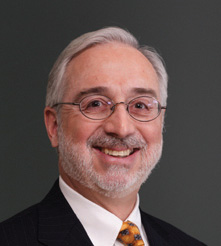The Art of Witness Preparation

After graduating from Vassar in 1977, attorney Craig Weinlein earned his J.D. from Southern Methodist University and an LL.M. from Columbia University School of Law. Since then he’s been practicing with the same Texas law firm—Carrington Coleman—for more than three decades, specializing in intellectual property law and business litigation. Earlier this year, he published his first book, The Art of Witness Preparation (Thomson Reuters Westlaw, 2012). We sat down with Weinlein to find out what’s really involved in preparing a witness to testify, and if it’s really as dramatic as TV and movies make it out to be.
Why did you want to write this book?
Craig Weinlein: There really are few useful sources for guidance in this area. Among legal publications, a lot of what you find is directed at helping the lawyer be a better trial attorney: how to make a better opening statement, how to do a better cross-examination. It’s all about the lawyer’s performance. This book is about how to teach the lawyer to teach the witness to be a good witness.
What makes for a good witness, and why is that important?
CW: It’s important in order for justice to be done. I’ve seen cases over the years where truthful witnesses who have not been well prepared may not be believed. Meanwhile, you may have some other witness on the other side telling a very different and contrary story, but they may in fact be very good liars. Judges and jurors don’t know the truth. They have to decide whom to believe, and they usually do that through witness body language, appearance, demeanor. The fact-finding that goes on in a trial process when there’s conflicting testimony has to do with how a witness testifies, not necessarily what they say. That’s the reason it’s so important to get a witness prepared.

Some may think you’re telling the witness what to say.
CW: Most people think that when you talk about witness preparation, that you’re trying to put words in the witness’s mouth. It’s not about trying to change the substance of witness testimony. Ultimately, you’re trying to get to two fairly straightforward, simple goals: you want the witness to be comfortable and familiar with the process, and you want the witness to be an effective communicator. Most people are not professional witnesses. It’s new and different. They may have misperceptions based on what they’ve seen on TV, or they don’t really know what to expect. If they’re unfamiliar, they may end up being more nervous, and judges and jurors will mistake a witness’s nervousness about the process with the substance of their testimony.
So what’s actually involved in witness preparation?
CW: You end up spending a lot of time making them familiar with the process: how direct and cross-examinations work, the differences between being examined in a deposition versus in a trial or hearing, the dirty tricks of the trade to trick witnesses, how to express thoughts in an organized way in complete sentences, being aware of nervous habits and body language they may not even realize. And there should be some role-playing and practice. Like in sports, explaining and telling me how to do something doesn’t mean I can actually do it.
What are some of the most common myths or misconceptions about the witness testimony process?
CW: A lot of witnesses don’t realize how detailed, tedious, and long an examination may be. But if you’re my opposing counsel and you’re examining a witness, that’s what you need to do. You want to tie the witness down on very specific points and details, brick by brick, to build an argument. A lot of times, testifying turns into more of a marathon than a sprint. Most depositions run about six hours.
Also, frankly, most witnesses think the whole experience is going to be more dramatic than it is. TV and movies have to make it that way to make it interesting. Witnesses often have this fear that their personal space is going to be invaded, that a lawyer will be in their face. In a deposition, the witness is across the table from the attorney. There’s much less drama to it.
